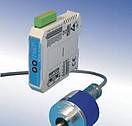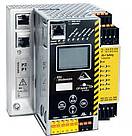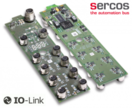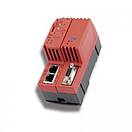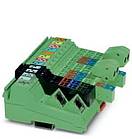Fieldbus integration
Although Industrial Ethernet solutions have a large number of advantages compared to traditional fieldbuses, such as higher performance, more flexibility and better consistency, fieldbuses are still very widely distributed and accepted in the market. Therefore, both will continue to be available for an extended period of time.
Fieldbuses were developed in the 1980s in order to replace the previously usual parallel wiring of binary signals and analog signal transmission with digital transmission technology. Today, there are approximately 50 different fieldbuses, which differ with regard to their technical features, areas of use and market relevance. The internationally standardized fieldbuses are included in the IEC 61158 standard (digital data communication for measurement and control – fieldbus for use in industrial control systems).
Fieldbuses were designed for a variety of needs. Sensor-actuator fieldbuses, such as AS-i or SSI, combine sensors and actuators. I/O buses, such as Profibus, Interbus, DeviceNet or CANopen, combine a decentralized I/O periphery with PLC controls. Drive buses, such as Sercos, are tailored to the fast and synchronous connection of decentralized drives with motion controls (CNC, MC or PLC).
Since fieldbuses and Industrial Ethernet solutions are based on different transmission processes, corresponding field devices cannot co-exist in a common network infrastructure.
There are several solution approaches for using peripheral devices with different types of bus interfaces in a machine or system:
- The various buses are brought together in a machine or system control. Since the control operates each of the protocols separately and exchanges data with each of the connected peripheral devices, it is not necessary to implement a protocol.
- Alternatively, the protocols can be combined in a decentralized gateway. The advantage is that the control only needs to support one interface (e.g. Ethernet) and one protocol (e.g. Sercos). The devices of the other bus system (e.g. Profibus) are connected using a communication gateway, which assumes the data exchange between the various buses.
For Sercos III, a variety of implementers from various manufacturers are offered that enable the connection of fieldbuses (e.g. Profibus, CAN) or sensor/actuator buses (AS-i, SSI, IO-Link). Moreover, gateways with axis controller peripherals are available to integrate analog axes. Gateways are either a feature of Sercos devices (e.g. modular I/Os) or are connected to the Sercos network as separate components.
